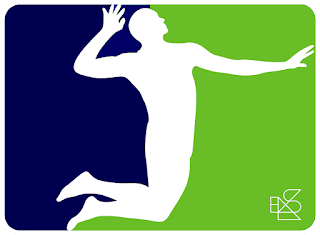Coach Drills v Player Drills
I've recently come up with a new term to describe drills: 'Coach Drills'. When I say that I've come up with it I mean that I've never heard the term in exactly the context I use, but, of course, that doesn't mean thousands haven't come up with it before!
Coach Drills
Drills which make a coach feel good but don't necessarily help the athletes improve.
Athlete Drills
Drills which are great for athlete learning but don't look neat and clean and make a coach feel good.
Note
I'm not saying there are only 2 types of drills and that there isn't a continuum. Anyone who suggests that in comments on social obviously didn't read this far and, as always, I know who you are ;)
Introduction
Like most conversations about coaching, let's start with....Brain Neurochemistry.
We know that there is a lot of brain neurochemistry that goes into athlete enjoyment and learning:
- we know that acetylcholine is a 'focus chemical' which is released when there is focus and urgency, and that it helps establish neural pathways required for change
- we know serotonin is a confidence builder which can be enhanced with breathing techniques (if I recall correctly)
- we know that dopamine helps resilience and that the combination of dopamine and adrenaline can be beneficial, but adrenaline alone is more likely to make you want to give up
- we know when amygdala deficit (fight or flight) is activated it is harder to learn (although I think someone told me recently this has been questioned recently, but I haven't seen anything about that)
- we know that endorphins are released when you exercise which help make you feel good (this one is important).
All those things influence us when we are developing learning environments for athletes, but what about thinking of them in relation to coaches?
Structure
We know coaches like drills that seem ordered/structured. Where everyone is doing the 'right' thing at the right time. These sorts of drills make us feel good and feel like good things are happening.
Feedback
Another example is drills where we give a lot of feedback until an athlete changes something, and we feel good. We feel like there was something good that happened in the session. Sometimes that is contagious and the athlete/s feel good because we feel good. But at the same time, we know that something learned without engagement in the learning is much less likely to be retained in the future.
Physical
The last example I'll give is when coaches do physical things in practice. It is pretty rare that a coach will not think things went well, because the endorphins released will make them feel good about things. But does that mean it was a good drill or that any learning happened with the athletes? (Hint: no.)
Conclusion
So, when I'm thinking about training I've started to think about drills as 'coach drills' or 'athlete drills'. That is, if it is something I feel good about, is it really helping the athletes as much as possible?
Also.
Coaching is hard.



Comments
Post a Comment